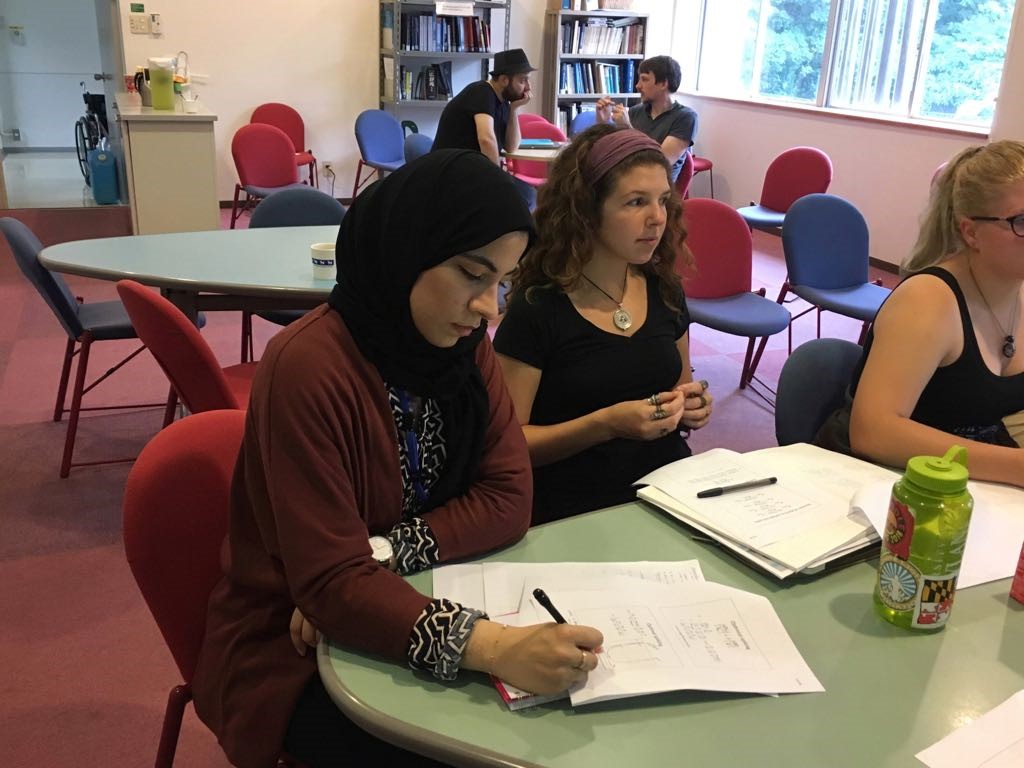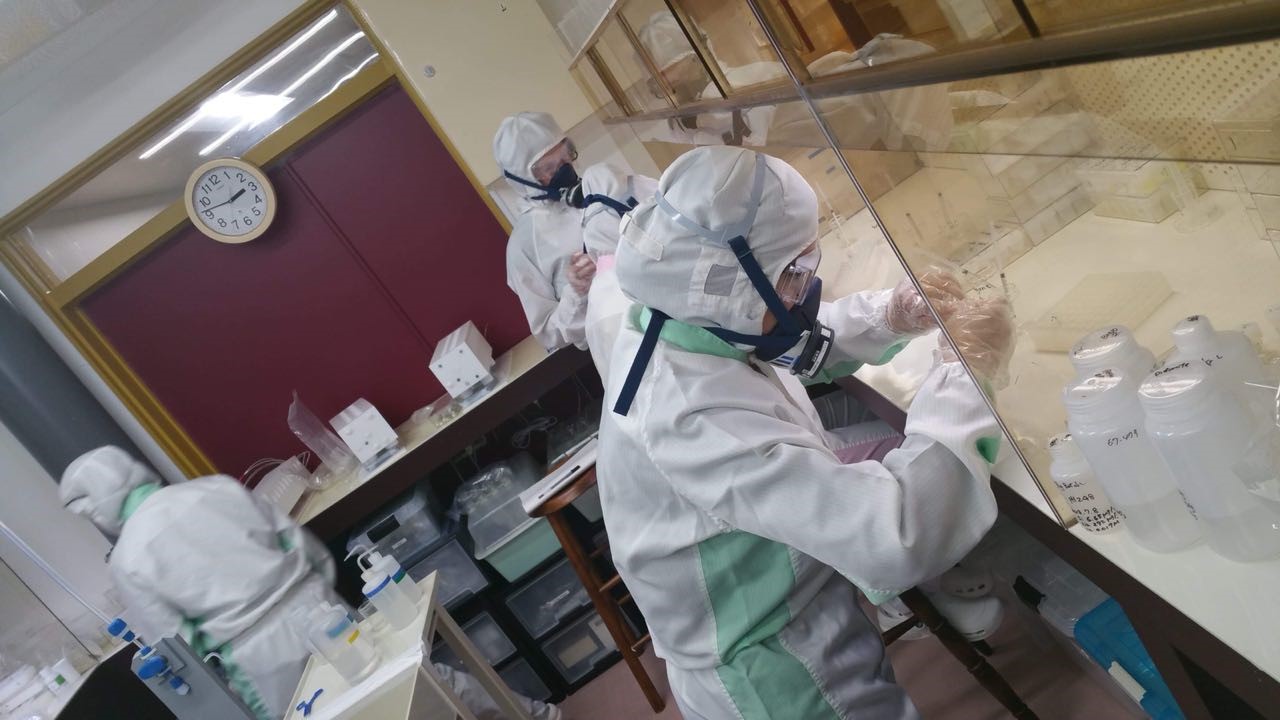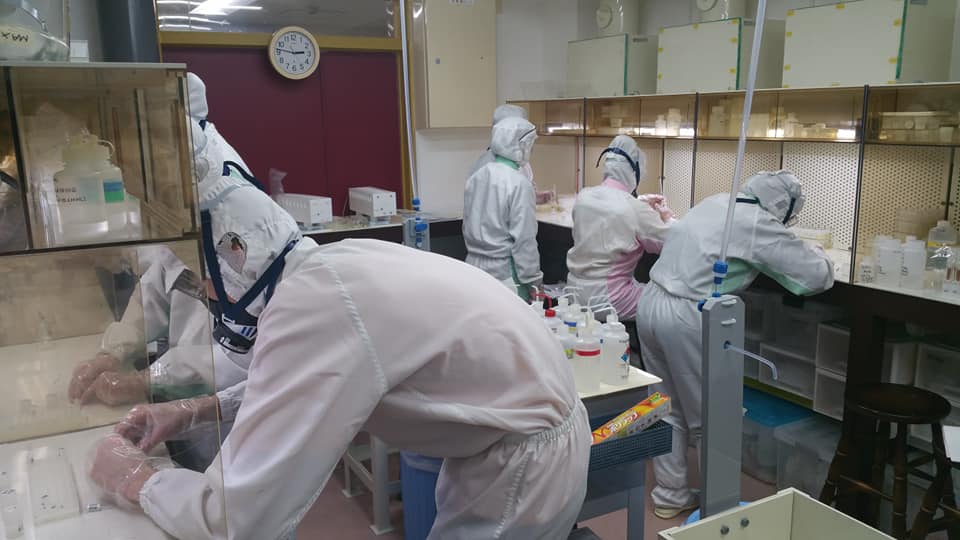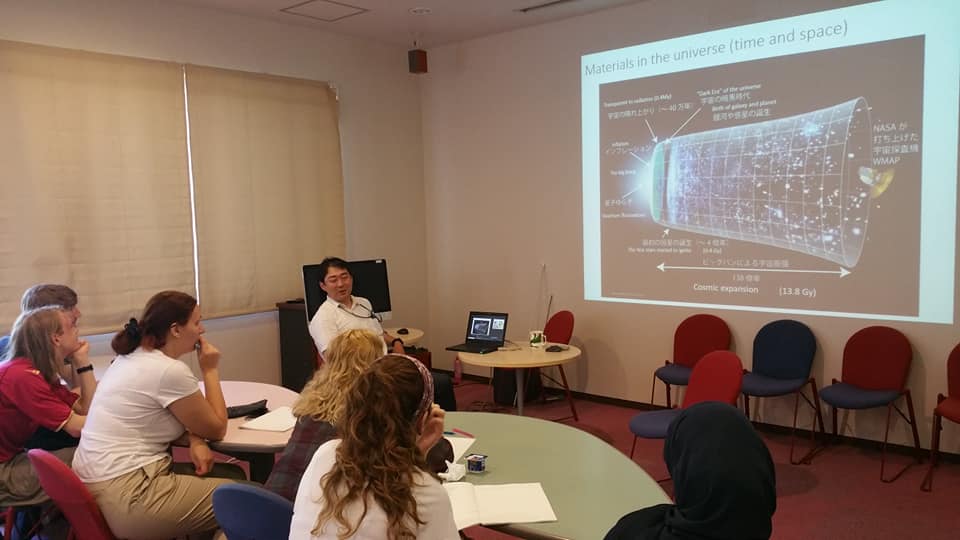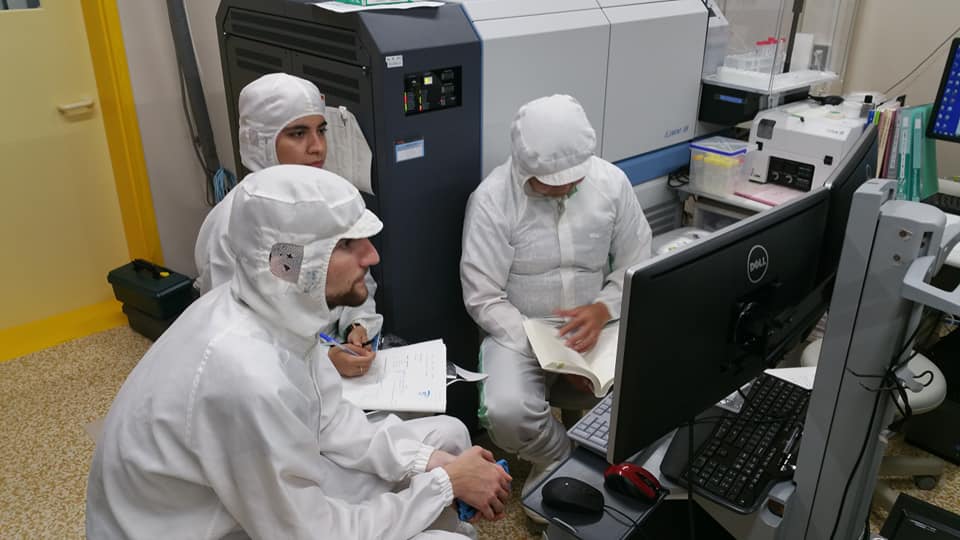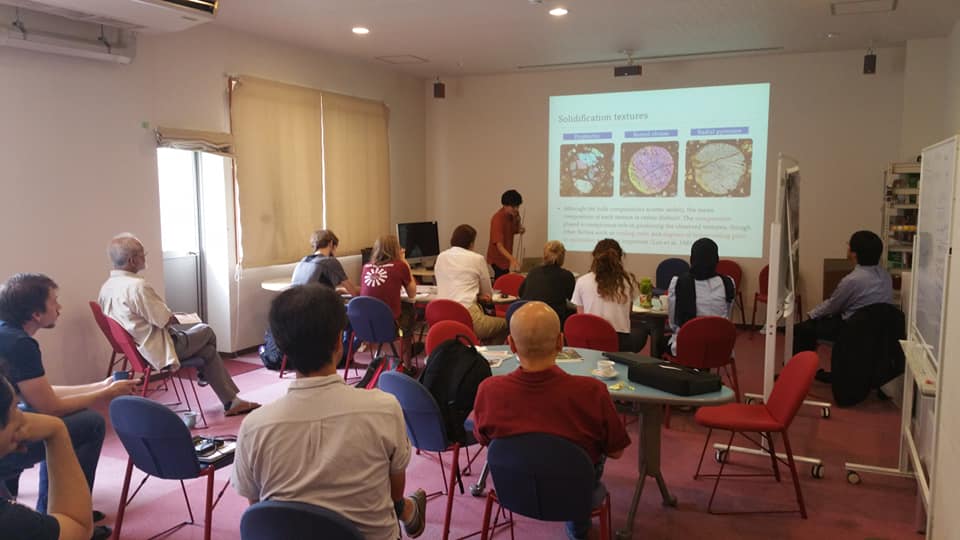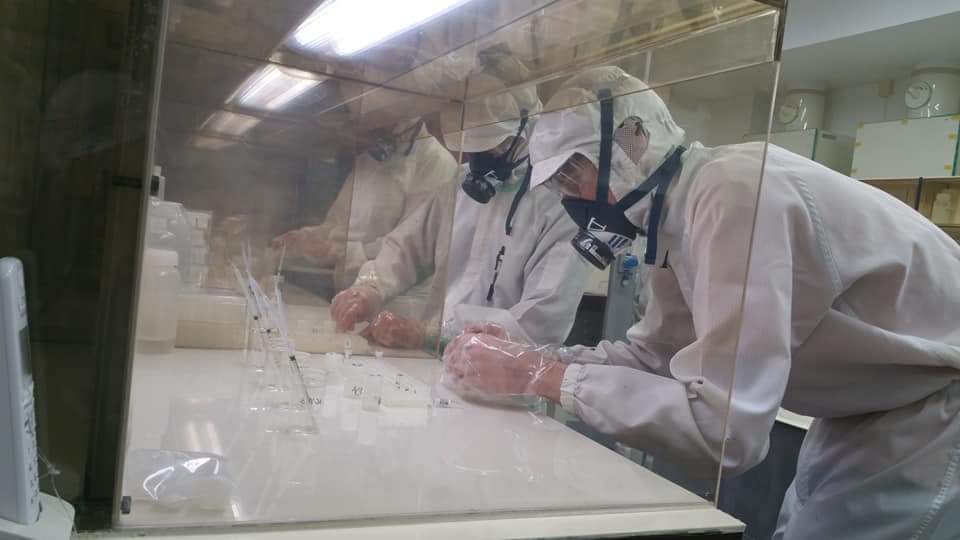MISIP 2018 "Geochemical probing: comprehensive analyses of carbonaceous chondrites"
Misasa International Students Intership Program 2018 Participants

Aisha Abdalla AlOwais
United Arab Emirates
Sharjah Center for Astronomy and Space Sciences

Kyle Dayton
United States of America
State University of New York

Noah Miklusicak
United States of America
University of Tennessee

Alexandra Ostroverkhova
Russia
Saint Petersburg State University

Gerrit Postema
United States of America
Carleton College

Hope Tornabene
United States of America
University of Maryland
Project Summary: Abstract
The 2018 MISIP internship program focused on carbonaceous chondrites. Carbonaceous chondrites are characterized by abundant carbon up to 3 wt% and unmelted-and-pristine nature. To seek for the materials without later stage modification, Hayabusa 2 targets the C-type asteroid “Ryugu” that is considered to be the parent body of the carbonaceous chondrite.
The carbonaceous chondrites are mechanical mixture of objects with different origin, and its major constituent is ‘matrix’ consisting of micro-grains with typical size to be less than 1 µm. The modal abundances of the matrix vary from 5% to 99% and random micro sampling of asteroid will likely result in collection of the matrix materials. Because of its gain size, major and trace elements distribution preserved on the grains in the matrix should reflect not only nebular condensation process but also asteroidal fluid-related process that are unique to each carbonaceous chondrite.
How one can reconstruct the original asteroid by increasing the quantity of materials to be analyzed? Sensitivity, precision, and resolution of analytical techniques are not constant against the quantity. During this program, the whole-rock carbonaceous-chondrites serve as parent bodies. The matrix materials correspond to sub sample of the bodies. What is the minimum quantity of the matrix materials to identify from which carbonaceous chondrites the materials are coming from? Three carbonaceous chondrites will be studied focusing geochemical description of both whole rock and the matrix materials using destructive and non-destructive techniques. Students will simulate an initial analysis of the materials returned from Ryugu. During the program, you have chances to analyze carbonaceous chondrites by several techniques that include SEM, EPMA, SIMS, LA-ICPMS, ICPMS, TIMS, and TEM.
